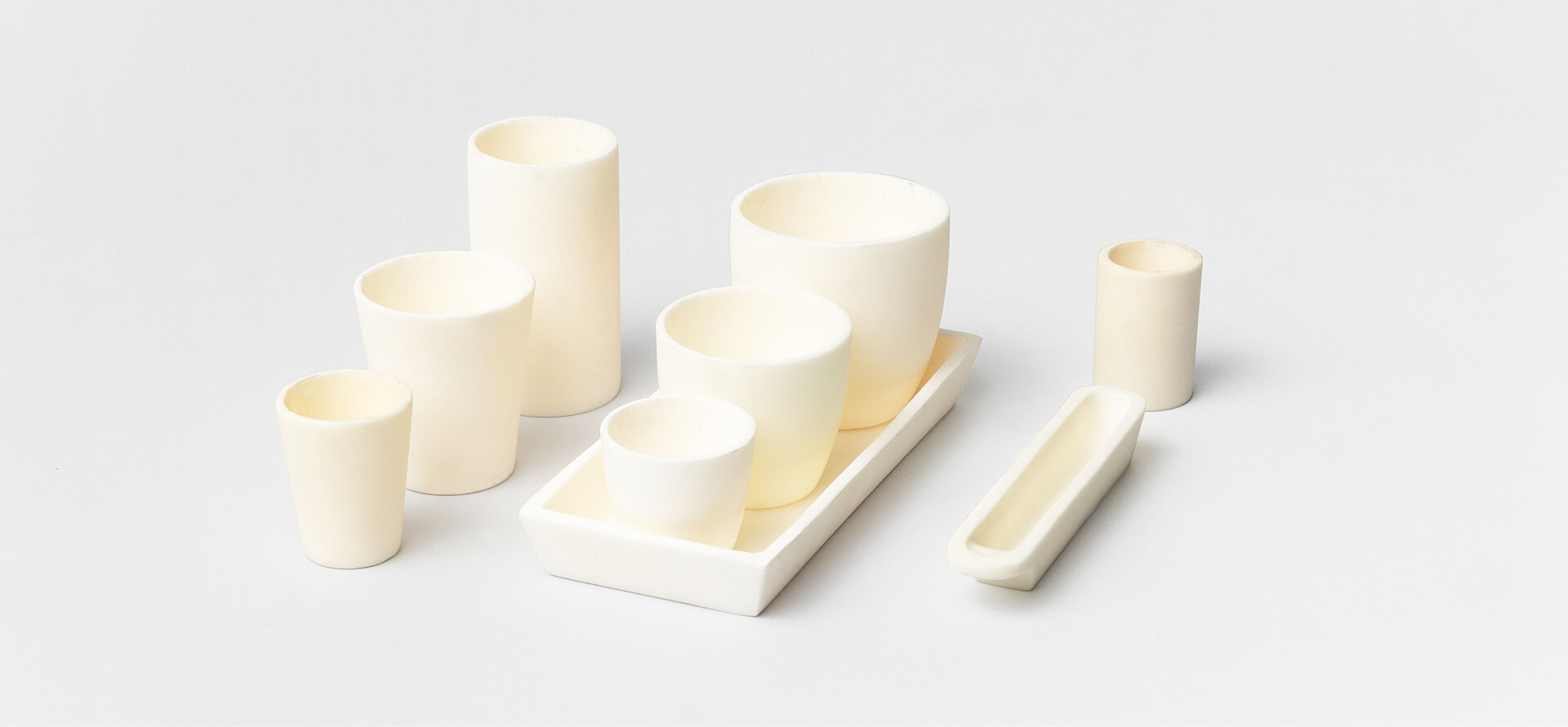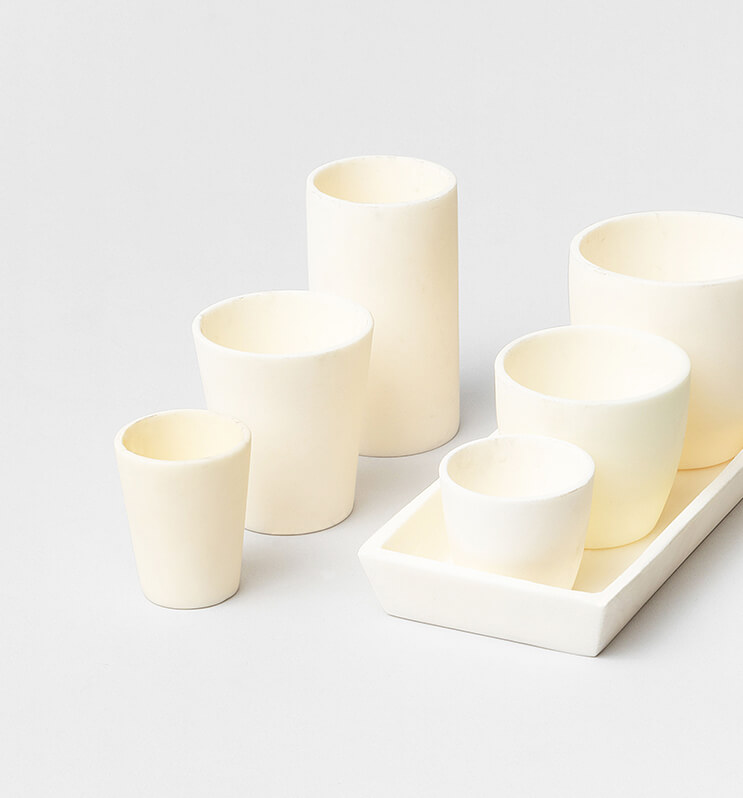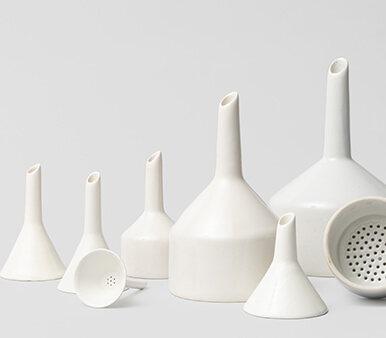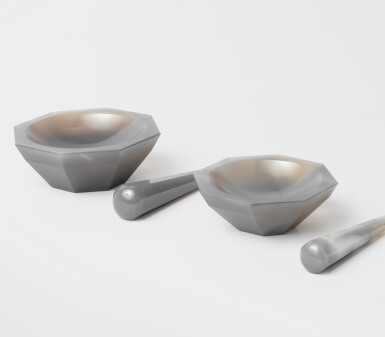Alumina Characteristics
99.7% alumina or more is distinguished by its good plasma resistance, high purity and wear resistance.
These wares are highly refractory, meant for use in reducing and oxidizing atmospheres. It is inert in hydrogen and carbonaceous atmospheres and offers high resistance to alkalies and other fluxes. Suitable for glass melting, including borosilicate glass.
Recommended for use with refractory metals such as Molybdenum, Platinum, Rhodium, Tungsten, Tantalum and Iridium. High- Alumina Labware temperature change rate should not exceed 150 degree/hour.
-
Chemical Analysis: Al2O3 [%] 99.8 (99.7) SiO2 [%] 0.015 (0.05)
MgO [%] 0.04 (0.08) Na2O [%] 0.03 (0.03) Fe2O3 [%] 0.015
(0.015) CaO [%] 0.01 (0.03)Density of 99.7% alumina: 3.922gm/cc
Maximum Temperature of use without load: 1750°C
Colour: Ivory
Flexural strength (MOR) : 493.4 MPa
Hardness (Moh’s Scale) : +9
Hardness (Rockwell scale) : 84
-
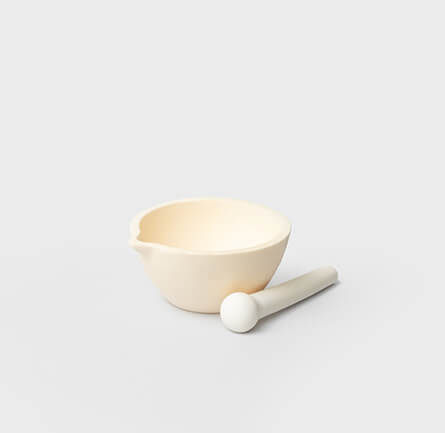
PESTLE AND MORTAR
99.5% Alumina Mortar, glazed outside and unglazed inside with oversized pestle
-
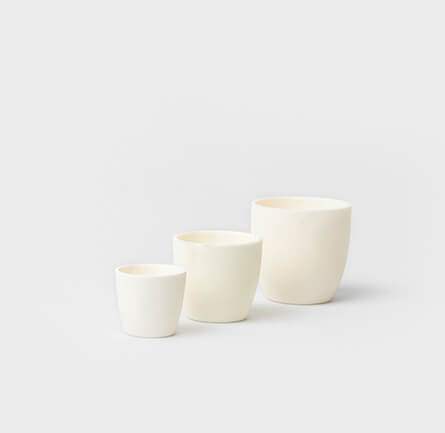
CURCIBLEHigh form, Low form
99.7% Alumina Crucible, unglazed to be used at max. Temperature 1750 degree C.
-
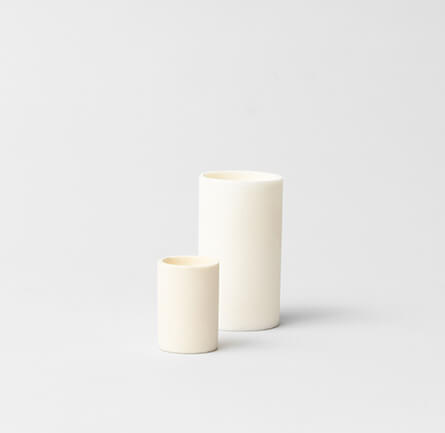
CURCIBLECylindrical form
99.7% Alumina Crucible, unglazed to be used at max. Temperature 1750 degree C.
-
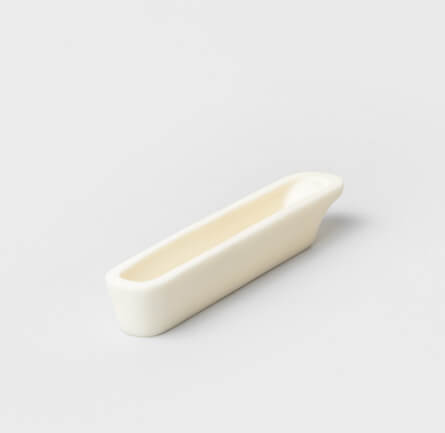
Combustion BoatWith spoon, knob, spatula
Depending on the variant, the spatula is glazed and either has a spoon, knob or a spatula on the other end.
